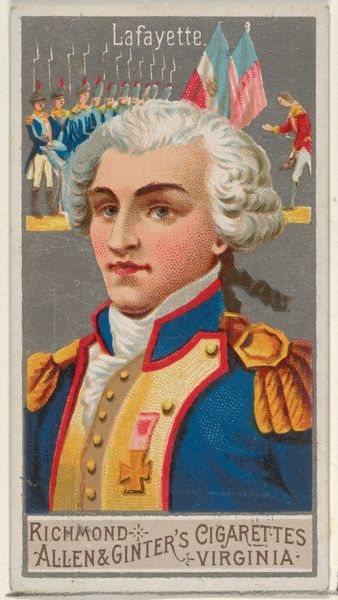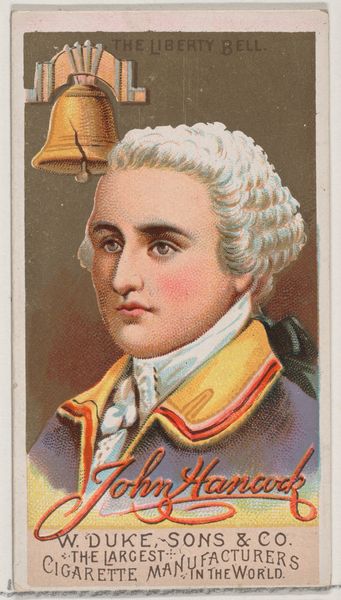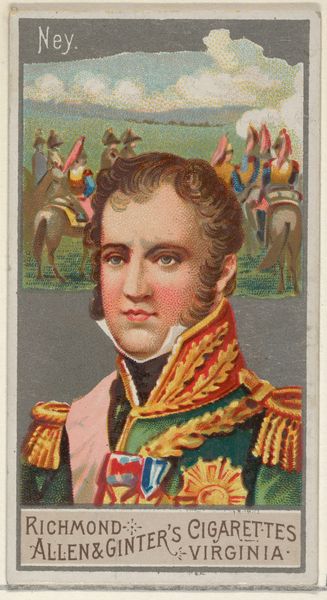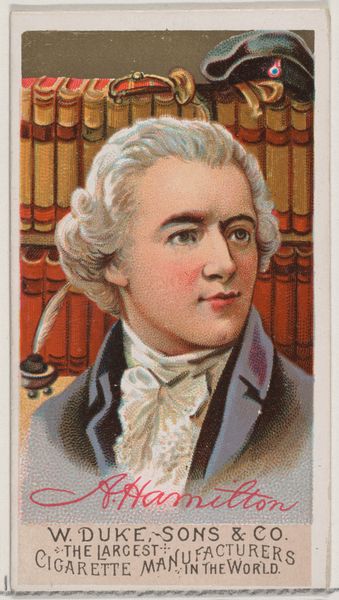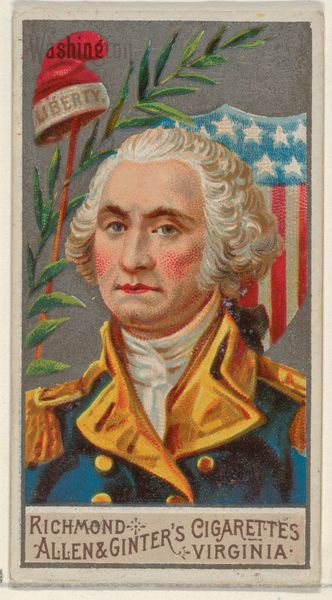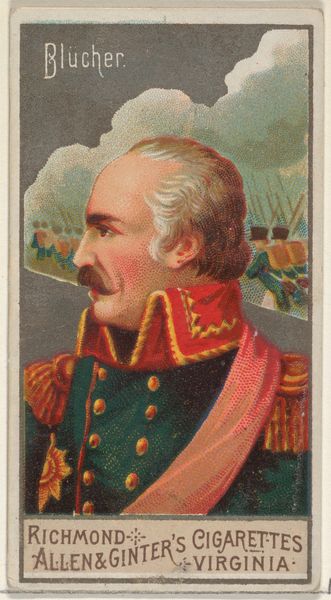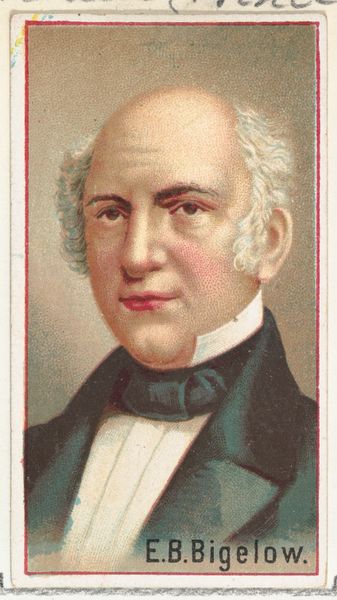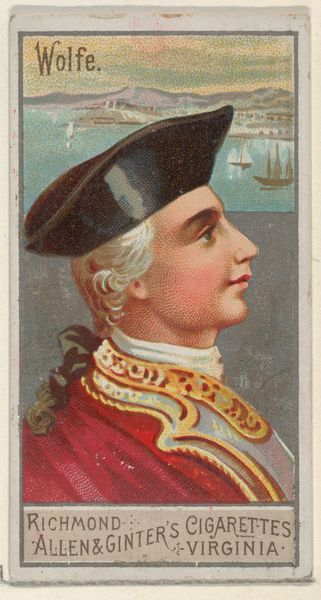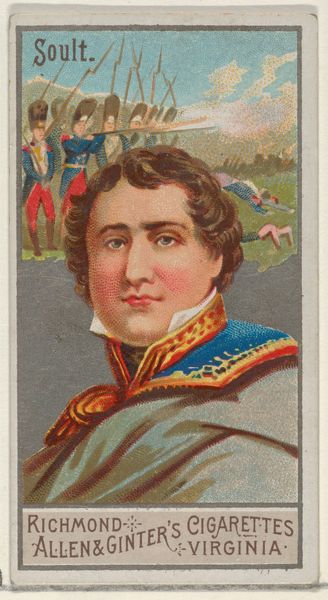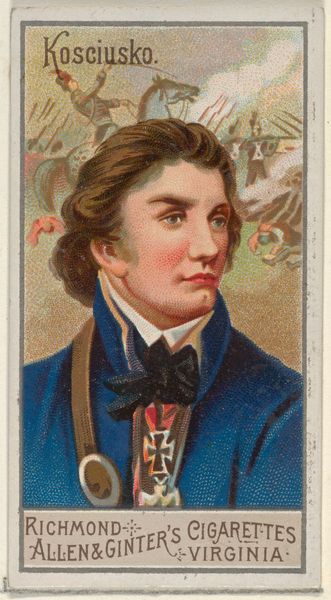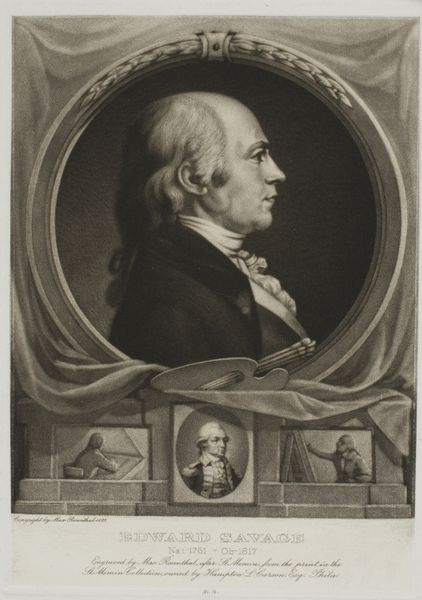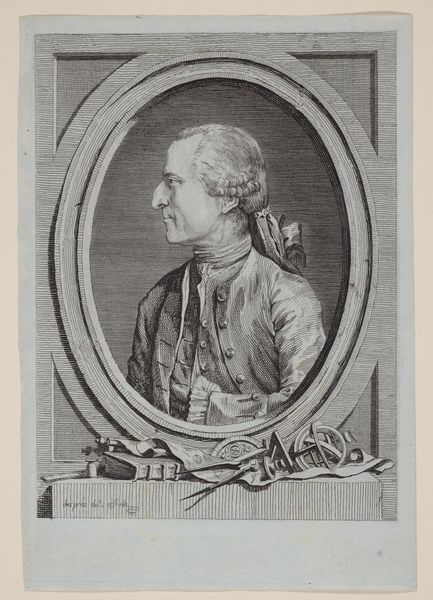
John Burgoyne, from the Great Generals series (N15) for Allen & Ginter Cigarettes Brands 1888
0:00
0:00
drawing, print
#
portrait
#
drawing
# print
#
caricature
#
oil painting
#
portrait reference
#
men
#
portrait drawing
#
genre-painting
#
facial portrait
#
academic-art
#
portrait art
#
profile
Dimensions: Sheet: 2 3/4 x 1 1/2 in. (7 x 3.8 cm)
Copyright: Public Domain
Curator: This is "John Burgoyne, from the Great Generals series," printed in 1888 by Allen & Ginter as a promotional insert for their cigarette brands. It's currently housed at the Metropolitan Museum of Art. Editor: The color lithography really pops. It’s striking how vibrant the red of his coat is, juxtaposed with that somewhat fantastical backdrop. It almost feels theatrical. Curator: It's interesting that you pick up on the theatricality. Burgoyne himself was a playwright as well as a general, which perhaps speaks to how identity and reputation were crafted, particularly for figures in positions of power during this era. Editor: Exactly, and this image becomes another layer of that crafted identity. The use of printed color makes it so accessible, a collectible that circulated widely. Considering that it comes as part of a series intended to promote consumption habits opens the conversation for scrutiny: What does the manufacturing entail, who profits, and at whose expense is it made? Curator: Those are key questions, indeed. We see Burgoyne here, an emblem of British authority during the American Revolution. By circulating his image, what narratives are being subtly reinforced about power, heroism, and even the ongoing project of empire? Are we implicitly glorifying a figure whose military campaigns caused immense suffering and displacement? Editor: Right. Thinking about materiality further, the very cheapness of this lithograph facilitated that glorification on a massive scale. Also, the small scale of it allows a tactile way to hold history and disseminate particular narratives, embedding it within people’s everyday lives in that time. Curator: This also speaks to the evolving role of photography and image dissemination. It marks a point where visual representations could rapidly shape public opinion and collective memory, often detached from the complexities of historical events. Editor: I agree completely. I also cannot get away from how much is given to and consumed by tobacco usage in the creation of its imagery. Curator: Considering this, it encourages us to challenge our own assumptions about the relationship between art, commerce, and cultural values. Editor: Precisely, it makes us consider the means of art creation as a way to create dialogue on political structures as well as consumerism. Curator: So well put! By scrutinizing images like this, we can bring scrutiny to contemporary issues. Editor: Right! Question everything you come into contact with because production methods speak louder than what's represented.
Comments
No comments
Be the first to comment and join the conversation on the ultimate creative platform.

